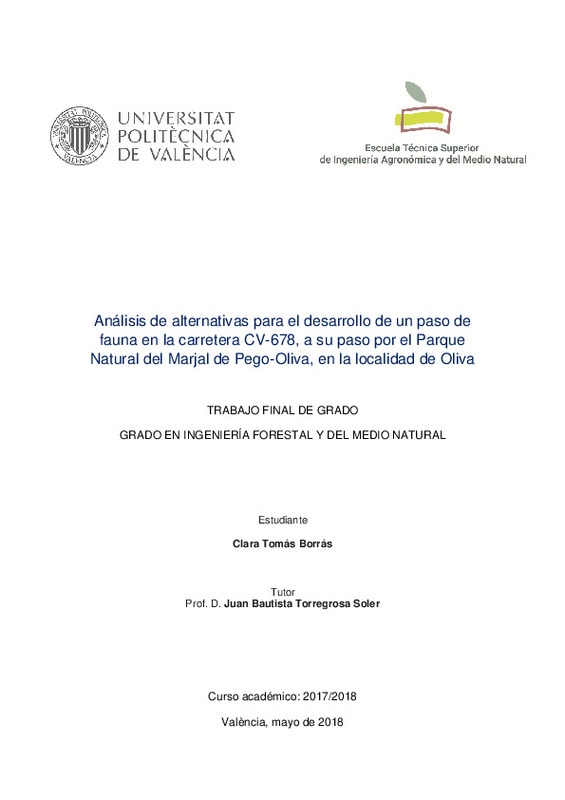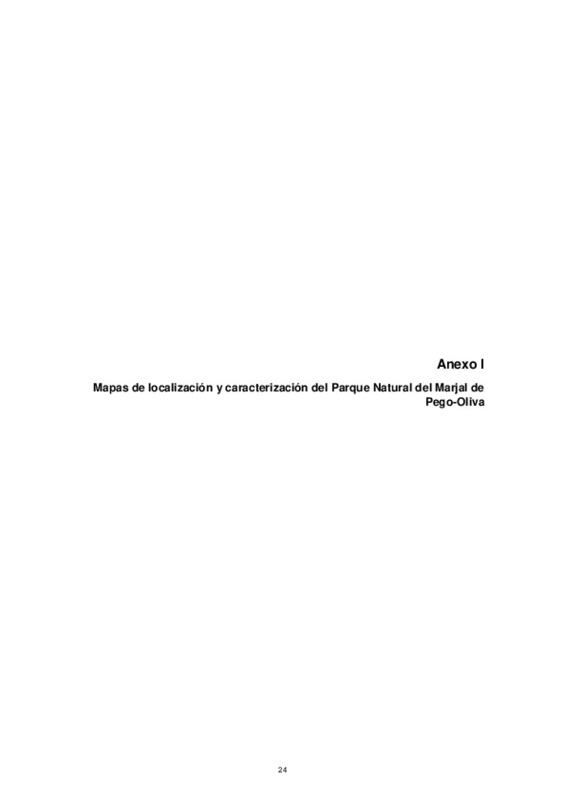|
Resumen:
|
[ES] La antropización y la creación de barreras físicas lineales como son los viales interrumpen, y en muchos casos, imposibilitan la comunicación entre la fauna. Este hecho produce elevada mortandad entre las especies que ...[+]
[ES] La antropización y la creación de barreras físicas lineales como son los viales interrumpen, y en muchos casos, imposibilitan la comunicación entre la fauna. Este hecho produce elevada mortandad entre las especies que intentan salvar las infraestructuras, siendo un dato alarmante el que encontramos en la evaluación de los atropellos de vertebrados en la red de carreteras de la Comunitat Valenciana, llevado a cabo por la llamada entonces Conselleria d¿Infraestructures, Territori i Medi Ambient de la Generalitat Valenciana, donde nos muestra que el máximo de atropellos se concentra en los Parques Naturales con un total de 956 atropellos en el año 2008.
Dicha problemática, se vienen estudiando métodos alternativos para disminuir el impacto y esta accidentabilidad que supone un cambio en el medio ambiente, y así, protegerlo y conservarlo lo mejor posible, teniendo especial cuidado con las especies más amenazadas o endémicas.
El Parque Natural del Marjal de Pego-Oliva, además de haber sido aceptado en el Convenio Ramsar como Zona de Especial Protección para las Aves (ZEPA) por su importancia a nivel de nidificaciones en épocas primaverales y otoñales de aves migratorias, contiene abundantes anfibios y reptiles, estando algunas de las especies de estas familias registradas dentro del Libro Rojo de Anfibios y Reptiles de España.
Tendrán especial relevancia a la hora de la especificación del paso de fauna los reptiles, sobre todo, a la tortuga de agua europea o galápago europeo (Emys orbicularis) y a la culebra bastarda (Malpolon monspessulanus) al ser las especies de reptiles más accidentadas en el parque y estar definidas como vulnerable y protegida respectivamente. A su vez, también se tendrán en cuenta a anfibios (Pelophylax perezi) y pequeños mamíferos.
El paso de la CV-678 por el Parque Natural del Marjal de Pego-Oliva pone en alto riesgo la probabilidad de atropellos y muerte de fauna silvestre que allí se encuentra, tal y como se pone de manifiesto en el reciente trabajo Incidencia de la infraestructura viaria sobre la fauna en tres humedales de la Red Natura 2000 en la Comunitat Valenciana, donde se realiza un análisis de los atropellos para determinar los "puntos negros" de las carreteras prospectadas. Este análisis está realizado mediante el cálculo del Índice Kilométrico de Abundancia (IKA), medida de frecuencia que relaciona el número de atropellos con el número de kilómetros recorridos, siendo para el Parque Natural del Marjal de Pego-Oliva un IKA total de 1,730 atropellos/Km.
A partir del conocimiento del medio físico que sustenta toda esta fauna, así como los antecedentes de atropellos en el período de los años 2000 al 2014, se pretende realizar un análisis sobre un paso de fauna que se ajuste a reptiles y anfibios en los emplazamientos más idóneos de la CV-678, con el fin de disminuir los accidentes ocasionados a lo largo de ella.
[-]
[EN] Anthropization and the creation of linear physical barriers such as roads interrupt, and in many cases, make communication between wildlife impossible. This fact produces high mortality among the species that try to ...[+]
[EN] Anthropization and the creation of linear physical barriers such as roads interrupt, and in many cases, make communication between wildlife impossible. This fact produces high mortality among the species that try to save the infrastructures, being an alarming fact that we find in the evaluation of the abuses of vertebrates in the road network of the Valencian Community, carried out by the call then Conselleria d'Infraestructures, Territori i Medi Ambient of the Generalitat Valenciana, where it shows us that the maximum of abuses is concentrated in the Natural Parks with a total of 956 abuses in 2008.
This problem, are studying alternative methods to reduce the impact and this accident that involves a change in the environment, and thus, protect and preserve it as best as possible, taking special care with the most endangered or endemic species.
Pego-Oliva Marsh Natural Park, in addition to being accepted in the Ramsar Convention as a Special Protection Area for Birds (ZEPA in spanish) because of its importance at nesting level in spring and autumn seasons of migratory birds, it contains abundant amphibians and reptiles, being some of threatened species registered in the Red Book of Amphibians and Reptiles of Spain.
There will be special relevance at the time of specifying the passage of wildlife to reptiles, especially the European water turtle or European pond turtle (Emys orbicularis) and the bastard snake (Malpolon monspessulanus) to be the most injured reptiles in the park and belong to species defined as vulnerable and protected respectively, and in turn also take into account amphibians (Pelophylax perezi) and small mammals.
The passage of the CV-678 through the Marjal de Pego-Oliva Natural Park puts at high risk the probability of abuses and death of wild fauna that is found there, as evidenced by the recent work Impact of the infrastructure road on the fauna in three wetlands of the Natura 2000 Network in the Valencian Community, where an analysis of the abuses is carried out to determine the "black spots" of the roads surveyed. This analysis is carried out by calculating the Kilometric Index of Abundance (IKA), a measure of frequency that relates the number of abuses with the number of kilometers traveled, being for the Marjal de Pego-Oliva Natural Park a total IKA of 1,730 abuses / Km
Based on the knowledge of the physical environment that sustains all this fauna, as well as the history of abuses in the period from 2000 to 2014, we intend to carry out an analysis on a wildlife passage that fits reptiles and amphibians in the most suitable for CV-678, in order to reduce the accidents caused along it.
[-]
|








